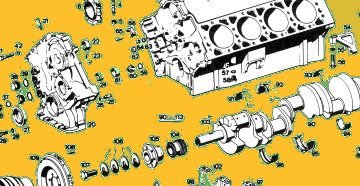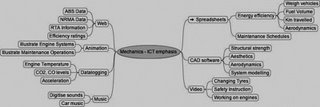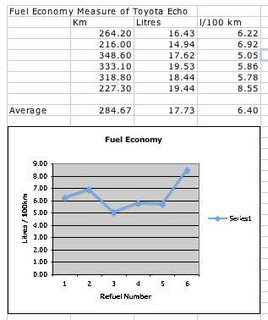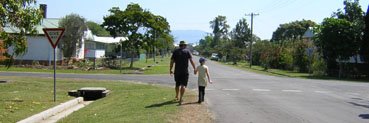Octopus (2006-06-24)

The eclectic nature of the construction of a piece of work.
Ok, a recent piece of work that I did was a three week (12 x 1.5hours) Mechanics course with Class 9.
Descriptive reflection:
The intent of course was to give students and overview about vehicles with a large hands on component. Several car engines were dismantled in the classroom by students. Students changed a flat tire and some also changed the engine oil and filter in their parents car. The 'hidden agenda' was to improve students practical technical drawing and communication abiliby. The students were to become familiar with 'exploded diagrams' and 'cross sections' by talking about car components/systems, unbolting things physically on the engine and drawing and labeling them. Click here for the student information handout that I wrote (word format created in Open Office). I used a couple of the fabulous 'Secret Life of Machines' videos (by Tim Hunkin) to reinforce the content.
The 'formal' assessment task I set for the studens involved designing a 'future vehicle', for which they could use internet resources to inform their design.
So it was intended from the start to be eclectic - a good dose of hands on, some visual media, some chalk and talk, some drawing, and research on the net. I was concerned that the girls might be less engaged through our car cultural biases, but could only think to ensure the girls had their own engine to dismantle without time pressure from the boys. It was compulsory for all students to change a car tire - and this proved to be particularly empowering for the girls. The practical work was done in groups - I wanted them talking and working out stuff together.

The course went OK. There was a limitation because the school did not have enough tool sets for more than two groups to work on engines at once. There was a certain amount of general background information that I wanted the students to understand but did not have time to do other than draw it on the board and get them to copy it into their lesson books. I have had a nagging suspicion for some time that most of the 'chalk and talk' stuff is transferred directly from the visual cortex to the muscles controlling the pen without lodging in any meaningful way in the learner's memory. When completing a small written test at the end of the course most students knew more about half of the information that was in the test that they had written down. How much they would remember in a year's time I do not dare to speculate.
Self Reflection
Crowd control is THE biggest issue with year 9. Engaging content is not only a nice idea and good for students, it is a survival tool. If the students are not engaged it is ten times the mental and emotional stress to survive the lesson.
The lesson was a step in the right direction - students were to some degree following their own path to knowing - but I am still bugged that it could have been better.
Critical Reflection
Piaget, Vygotsky, Gardner, Bruner
I think Bruner would have aproved of the level of 'enaction' and 'iconification' going on in this course. My intent with the group engine dismanteling component was to include a degree of 'self discovery' for the students. The requirement to manipulate engine components physically and to draw and describe components that the students worked with was intended to make the task satisfying for the students. The subject was weak on the logical/symbolic side - although mechanics always ultimately involves problem solving of some sort. Limitations on tools, space, teaching resources and time meant that it was unlikely that most of the students entered into a decent problem solving mode during the course.
The ZPD was not consciously assessed when I developed the course - though I will certainly consider it for future courses. The class contained a range of pre existing knowledge of mechanics, though the majority of students had little direct experience with car internals or with describing machines graphically. The 'knowlegible peers' forming the upper potential of the zone were myself, my co-teacher Brigid, The workshop staff, the student's parents and the Internet. The scaffolding provided was the varied/fun/interesting/challenging tasks (engine, wheel change, future vehicle task) in a controlled/supported environment, combined with some background 'chalk and talk' about what the students should expect to find in an engine.
The multiple inteligences were partly addressed. Linguistic tasks were there by default but not strongly emphasised (kind of an educational 'positive discrimination'). Spatial/kinesthetic tasks were there, Inter and Intrapersonal challenges were generated by the group work. Ethical and environmental issues were discussed at a linguistic level. Missing were musical, movement/dance, and mathematical challenges.
Were the tasks appropriate to the students cognitive development? Class 9 students are 14 turning 15, and should, according to Piaget, be well into their Formal Operational development. The content of the course did touch briefly on abstract concepts such as energy and inertia. It also covered social questions about vehicles place in society and their evolution - which is largely abstract and conceptual. However, by including a hands on 'Concrete' component hopefully a balance was struck between the needs of any concrete-operational students with the developing formal operational students. Certainly the risks of presenting material that is not cognitively appropriate is small for students at this age. The main concern would be if there was not enough conceptual/abstract content to engage and challenge students.
Roadmap to improved Mechanics:
So Next time around - be bolder and try to be truly constructivist. Include tasks to cater for l to more of the intelligences - poetry, fiction, painting, environmental, existential. Attempt to bring more resources to the course both to increase access (DLE) and to provide a larger ZPD and more scaffolding. ICT could provide some affordable and available resources for this.

It is all possible, and would I am quitely confident that it would be more fun, and more would actually learned.















